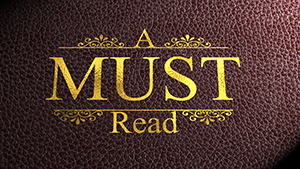C.S. Lewis’ The Lion, the Witch, and the Wardrobe
 As I promised a couple of weeks ago, I am continuing my trek through C.S. Lewis’ Narnia books (among other novels, of course). This brings us to entry #2, The Lion, the Witch, and the Wardrobe. Now, this novel picks up roughly 40 years after The Magician’s Nephew. The main character of book one, Digory Kirke, now allows his house to be host to four orphans who were evacuated from London during the Blitz: Peter, Susan, Edmund, and Lucy Pevensie. As she explores the house, young Lucy finds a wardrobe. Climbing inside, she is transported to the magical world of Narnia, where several centuries have passed since the first book. Learning that the White Witch has tyrannically ruled Narnia for years, Lucy returns with his siblings, and the struggle for the rightful rule of Narnia begins.
As I promised a couple of weeks ago, I am continuing my trek through C.S. Lewis’ Narnia books (among other novels, of course). This brings us to entry #2, The Lion, the Witch, and the Wardrobe. Now, this novel picks up roughly 40 years after The Magician’s Nephew. The main character of book one, Digory Kirke, now allows his house to be host to four orphans who were evacuated from London during the Blitz: Peter, Susan, Edmund, and Lucy Pevensie. As she explores the house, young Lucy finds a wardrobe. Climbing inside, she is transported to the magical world of Narnia, where several centuries have passed since the first book. Learning that the White Witch has tyrannically ruled Narnia for years, Lucy returns with his siblings, and the struggle for the rightful rule of Narnia begins.
If you have seen the movie and think the experience compares with the book, it doesn’t. It’s normal for books to be more detailed and immersive than movies, but in this case the book is leaps and bounds better than the movie. Still, this isn’t a film review. So how was the book? Lewis’ signature writing is still present, bringing the world to life with childlike whimsy, all while painting the series in a mature light: you know there is something dark and very not childish going on behind the scenes. Now, if you have read the books thus far in chronological order, you have an idea of what that darkness is. If not, and you haven’t seen the film or even head about the plot line in passing…where have you been? The White Witch is in full power, and she is prone to pulling Emperor Palpatine levels of manipulation. Here, Lewis’ strikes gold, and also establishes one of the most annoying character relations in fantasy history. I don’t want to spoil too much, but while the interactions brought about by these manipulations are iconic in much of fantasy today, there are points where you want to take a baseball bat to the character in question. In terms of writing, Lewis has no trouble evoking imaginative responses from his readers. That being said, this is the first entry of The Chronicles of Narnia that he wrote, and there are times where you can tell. Sometimes, the childishness of the characters gets a little too out of hand, or some sound ideas just don’t pull together as well as you may be accustomed to if you read The Magician’s Nephew first. It isn’t going to detract from the read much, but it is there. If you have enjoyed the series thus far, there isn’t a reason for you to not continue. If you are wanting to start with this novel, even better. It provides a fun introduction to the Narnia world. Lastly, if you are wondering if you can really get into fantasy at all, this may just be a good place to start: this is where many a fan got there first fantasy fix. It may not be my favorite of his books, but C.S. Lewis’ The Lion, the Witch, and the Wardrobe certainly stands the test of time…and the test of nostalgia goggles.











